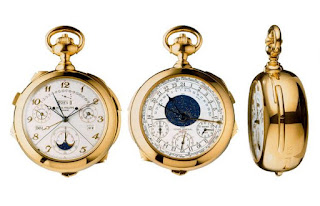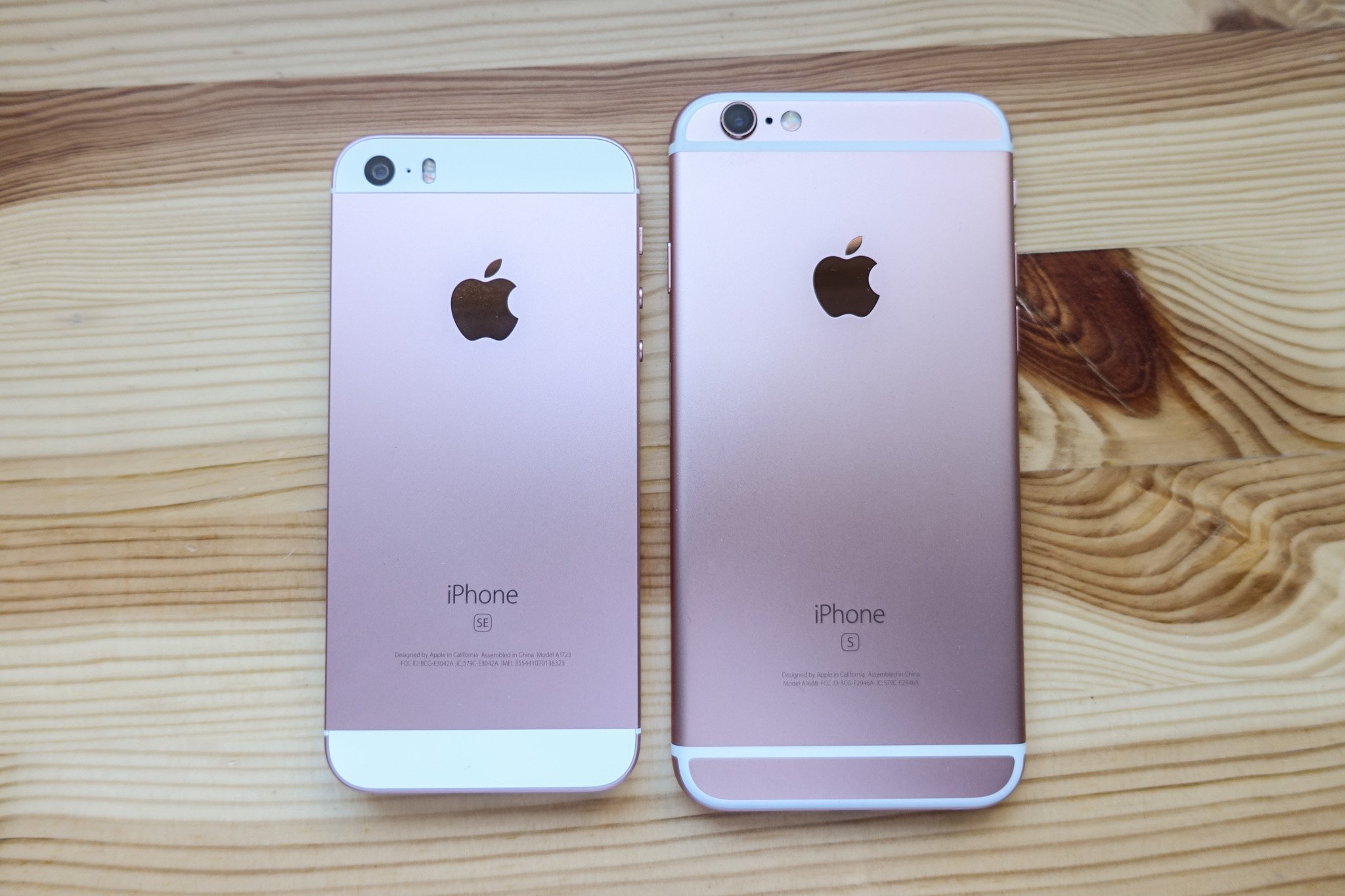The best personal tech should be invisible. Not literally, that would be unhelpful. But it should fit into your life seamlessly, without significant adjustment to your life, unless it augments it. Smart phones are a brilliant example: you already had a mobile phone, but here's one with more sensors and downloadable apps. Super productivity or super distraction? Your choice, but either way you're ostensibly happier.
 |
| Henry Graves Supercomplication Pocket Watch |
Remember pocket watches? No, I never wore one either, but I imagine they were the mobile phones of their day. Before them, you had to find or hear a clock somewhere, usually a church or a school or a station. Suddenly you had the power of time in your hand.
Then, in 1968 Patek Phillipe made, arguably, the first wrist watch. It was intended as jewellery for ladies, who often didn't have pockets for a watch. As the technology improved and became more rugged, soldiers adopted them. The pocket watch didn't fade away, it just added features, culminating in the Henry Graves Supercomplication, made by Patek Phillipe in 1933 and still the most expensive watch in the world ($24m at last auction in November 2014).
Point is, the problem of conveniently telling the time was, effectively, solved with the wrist watch. But it has barely evolved since. Despite watchmakers' enduring ability to sell absurdly overpriced lumps of metal because they'd work on the moon, or at 10,000ft underwater, these lumps are functionally redundant, for the most part. Like handkerchiefs. Most millennials don't wear a watch because they have a smart phone with network/atomic accuracy.
So if you're selling a smart watch you're either trying to persuade a youngster to wear something useful on their wrist, or persuade an older person to replace their expensive birthday present for something more useful and equally elegant.
Smart watch?
The original Pebble was a great concept in 2013: a watch that listens to your phone (both Android and iOS!) and lasts a week. Biggest Kickstarter project ever at the time. And they delivered what they promised. Now, I'm a big watch fan, have about eight at any given time, but it didn't attract me because the screen was black and white only and the case was too big. It looked like a 90s Nintendo Gameboy for your wrist. Without the retro fun.
 |
| The original Pebble. Neat but ugly. |
But earlier this year Pebble ran another Kickstarter campaign to build the Time: promising colour screen and slim form factor yet still the 5 day battery life. All the other smart watch makers are targeting looks and features, but these guys are sticking with their formula and refining it. Many people scoffed at the paltry 64 colours and lack of touchscreen, but those of us with some electronics knowledge realise that full colour touchscreens burn battery life, and what's the point of a watch you have to plug in every day? Might as well just use your phone. At $189 it's $100 cheaper than a Casio Pathfinder or Citizen Ecodrive. So why on earth not? I backed it.

Pebble Time!
It's very light - feels lighter than the strap - and pretty slim. The strap is smooth and soft, with a little stretch to it. One of the best I've worn in terms of chafing, which is no small thing for my hairy wrists. After 10 mins wearing it I pretty much forgot it was there, so big tick in the 'invisible' box.
Screen
 |
| Classic elegance... with weather |
While the screen is a decent size, there's still a lot of real estate not used. No doubt Pebble sought to maximise screen size within technical constraints, but what about solar panels in the frame or that outer bezel? Even though a Pebble consumes about 5x the power of a solar watch, like a Pathfinder, solar top-up could still potentially increase battery life by 20%.
 |
| Outdoors... with stats |
The screen is a bit dim in some light, needing a shake of the wrist to activate the backlight. Not a big issue (I know many lump of metal wearers who have their straps so loose they have to wiggle their wrists to haul the watch into view anyway), but there's currently no control of the backlight timer, so it may fade too quickly causing you to have to shake again. Frustrating, but easily rectified (please, Pebble!). Thankfully, there are loads of watchfaces, and many have colour configuration options, so it's easy to find one that is hi-viz.
Notifications
It's a similar story for notifications: I can't control them as well as I'd like in two ways: first, being able to mute some apps. You can do it on the phone, but why not on the watch too? Secondly, there's just one buzz signal. I've seen pebble apps that offer multiple buzz combinations, and it would be great to make better use of these in notifications. I don't know if the Time buzz motor supports variable strengths, but that would be great too.
Buttons & gestures
The buttons are excellent, and the motion sensor is really well tuned to different movements, which some apps, like the OutDoorWatch app (above), use to great effect. Move your arm laterally, like throwing a frisbee, toggles the bottom section of the screen to switch displays between, say, a barometer graph and a compass. Shake your wrist side to side once slowly and the middle section changes. With the combination of buttons and wrist shakes I don't miss a touch screen.
Battery
Battery life is as advertised: 4-8 days depending on use. 4 days if you're mucking about with it all the time, and using watchfaces that update the weather every 20 mins.
Microphone
The watch has a mic for voice control, but it's not well supported yet. This could be a brilliant addition to a beautifully simplistic watch, allowing you to literally call up all those voice-enhanced features of your smart phone from your wrist: voice memos, Siri or Google Now etc.
Apps
As you look through the Pebble App store you get the sense that developers are either waiting for the crowd's reaction, or being passively discouraged by the incumbent app store owners. Not only did Apple delay release of the Pebble Time app on the iOS AppStore (they relented after a social media campaign), but they have made some of the API functionality of iPhones exclusive to the Apple Watch, shutting out Pebble from offering some more enhanced features in the iOS version. No such apparent limitations on the Android version, so the Android version of the Pebble app has better app features available than the iOS version. Let's hope Apple play fair and open it up. There's plenty of room in this fledgling market, and no need for Kickstarter-backed David vs biggest market-cap in the world Goliath.
The trouble is that this sort of friction makes third party developers jittery. So while some of the main app contenders, like Evernote and RunKeeper have Pebble apps, some of their competitors, like Strava and OneNote don't.
In addition to their C-based development environment, Pebble have released a Javascript framework intended to attract non-hardcore developers to lash their mobile app APIs to a simple Pebble app. I haven't tried it, but the fact that I'm tempted says a lot for this little device.
Smart Straps?
As you see from the picture above of the back of the Pebble, the strap has quick-release pins for so-called smart straps. These are add-ons that offer more hardware features, like more sensors or batteries, or both. This could be a killer feature, if you think about it. Some ideas
here.
Conclusion
The Pebble Time is light and almost invisible, and has fitted into my life seamlessly: I'm not scurrying around to find charging points, nor am I stroking it every five minutes like a cat with ball of wool. The subtlety of wrist-based notifications is not to be under-estimated: a quick glance at your wrist is significantly less effort than hauling that buzzing widescreen out of your pocket only to find that you've received a spam text. The apps that I do have are also just right for the wrist: running app, music app, misfit app, authenticator app, travel app - those activities that you don't want to be digging out your phone for.
So there's all that subtlety and convenience that Apple Watch reviewers have been raving about. Except this watch costs half an Apple.
There's another Apple-beating convenience too: the biggest convenience factor in every watch since Patek Phillipe's in 1868: battery life. The only Apple watch reviews I've seen that have reported battery life to be 'fine' are by techies who probably already plug in five devices a day. Let's see if real consumers are just as glowing about one day of battery life after the novelty has worn off. I don't doubt that it's a beautiful piece of kit, but is it useful enough to warrant daily charging? Unless it replaces your phone completely, like the wrist watch did the pocket watch, it never will be.
My only concern with the Pebble Time is that its potential never gets fulfilled; that it gets crushed by less functional but more glamorous and wealthy competitors. In these days of social media and crowdsourcing they don't need much clout to hold their own and gather support, but they need to do it fast.
Show us some smart straps, get that damn mic working, sort out the notification buzzes and we could have a winner here!








